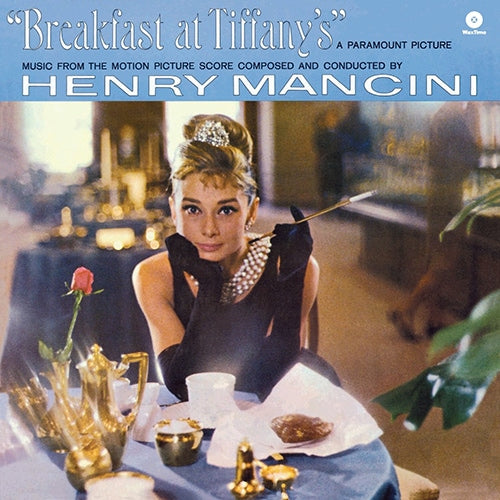In our last installment (Issue 136; Part One appeared in Issue 135), we left you at the Banzai Pipeline, surfing your way to one of Henry Mancini’s greatest big band tunes.
To start off, it’s not quite jazz this time around, but let’s share a little rarity. This tune was released only on a 45 RPM single, and on the occasional Mancini anthology. This was the main title theme from the film A Shot in the Dark, the Peter Sellers vehicle that served as a sequel to The Pink Panther, and introduced Jacques Clouseau’s trusty sidekick Cato (summarily destroying Clouseau’s apartment in the process). The flip side of the single, “Shadows of Paris,” was the tune that backed the cloak and dagger opening montage of the film.
Now, we’ll touch on another jazz album, Mancini ’67. It has some solid recordings on it, but this is also around the time that RCA’s albums began to suffer from a stuffy and distant sound that takes away much of their impact. Thankfully the performances hold their own.
Hank gave his soloists a lot of room to shine on the classic “’Round Midnight.”
He picks up the pace on “Cherokee (Indian Love Song).”
An early Quincy Jones tune, “Stockholm Sweetnin’” also gets a nice cover:
One of the better-known (but still not wildly popular) films that Mancini penned music for was Orson Welles’ A Touch of Evil. The soundtrack had some memorable work but unfortunately, the sources for the CD versions are lacking in sound quality. In a nod to this film score, Mancini gave the main title theme a redo on the album The Big Latin Band of Henry Mancini.
Mancini would record many soundtracks from this point onward, but it wasn’t until 1972 that he got back into styles other than orchestral or solo piano (such as his Warm Shade of Ivory album, which gave him his only No. 1 Billboard hit with “Love Theme from Romeo and Juliet”). In 1972, a short-run TV series called The Mancini Generation, hosted by Mancini himself, featured a some jazz tunes among the features, including a new version of “Charade”:
…and a cover of the Benny Golson tune “Killer Joe” with a rather odd melody line on synthesizer:
The album Symphonic Soul from 1976 featured primarily soul and funk tunes set to strings, with some jazz soloing over the top of them. The jazz standout here, though, is “Peter Gunn (New Version),” which gets a total funky redo. Not only that, the roster on this tune includes Abe Laboriel on bass, Harvey Mason on drums, Joe Sample on the organ solo, and Bud Brisbois on the piccolo trumpet solos. Guitarist Lee Ritenour also appears on this album. Abe Laboriel was originally a guitar player, but Mancini convinced him to play electric bass on this tune, and the rest is history.
To close this out, let’s circle all the way back to Mancini’s first “big one,” the original theme to Peter Gunn, so you can compare them directly. All these years later, it still oozes a coolness that few other tunes can touch. Enjoy!
If you are shopping for any of Mancini’s albums, I can vouch for the high-resolution versions on Qobuz as sounding excellent, perhaps with better mastering than any other digital versions I have heard. I own five LP copies of Uniquely Mancini and am split on which version sounds better – the earlier Dynagroove pressings (with the silver “RCA Victor” name at the top of the label) have more of a punch to them, where the later pressings (with the white “RCA Victor”) seem to be slightly dulled but have a richer midrange. I have yet to hear a digital version that sounds as good as the vinyl.
The three 45 RPM Analogue Productions reissue LPs are my go-to versions for The Music from Peter Gunn, Hatari!, and The Music from The Pink Panther; they also produced SACD versions of these titles. The original “Living Stereo” versions of his earlier albums do sound good as well, and a clean Dynagroove pressing should serve you well for the ’60s titles. The later Dynagrooves (with the white “RCA Victor”) marked a time when RCA’s mastering tended to be on the dull side. And the ’70s albums I always felt were weak in the bass.
Despite the sound, there is a lot of good music to explore. Don’t be shy – give the jazz tracks a listen and enjoy!
As I often do, I’ve compiled a Qobuz playlist of most of these tracks and a handful of others. Some of his albums are not available on Qobuz, but I have substituted a few from compilations where possible. “Walkin’ Bass” and “My Manne Shelly” are from More Music from Peter Gunn. Since The Blues and The Beat is also not available, the track “Sing, Sing, Sing” from that album was pulled from his 3-CD Days of Wine and Roses box set, which is one of the best career retrospectives out there.
https://open.qobuz.com/playlist/5961562




